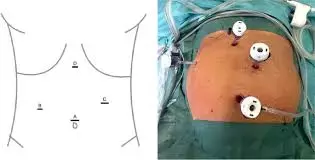- Home
- Medical news & Guidelines
- Anesthesiology
- Cardiology and CTVS
- Critical Care
- Dentistry
- Dermatology
- Diabetes and Endocrinology
- ENT
- Gastroenterology
- Medicine
- Nephrology
- Neurology
- Obstretics-Gynaecology
- Oncology
- Ophthalmology
- Orthopaedics
- Pediatrics-Neonatology
- Psychiatry
- Pulmonology
- Radiology
- Surgery
- Urology
- Laboratory Medicine
- Diet
- Nursing
- Paramedical
- Physiotherapy
- Health news
- Fact Check
- Bone Health Fact Check
- Brain Health Fact Check
- Cancer Related Fact Check
- Child Care Fact Check
- Dental and oral health fact check
- Diabetes and metabolic health fact check
- Diet and Nutrition Fact Check
- Eye and ENT Care Fact Check
- Fitness fact check
- Gut health fact check
- Heart health fact check
- Kidney health fact check
- Medical education fact check
- Men's health fact check
- Respiratory fact check
- Skin and hair care fact check
- Vaccine and Immunization fact check
- Women's health fact check
- AYUSH
- State News
- Andaman and Nicobar Islands
- Andhra Pradesh
- Arunachal Pradesh
- Assam
- Bihar
- Chandigarh
- Chattisgarh
- Dadra and Nagar Haveli
- Daman and Diu
- Delhi
- Goa
- Gujarat
- Haryana
- Himachal Pradesh
- Jammu & Kashmir
- Jharkhand
- Karnataka
- Kerala
- Ladakh
- Lakshadweep
- Madhya Pradesh
- Maharashtra
- Manipur
- Meghalaya
- Mizoram
- Nagaland
- Odisha
- Puducherry
- Punjab
- Rajasthan
- Sikkim
- Tamil Nadu
- Telangana
- Tripura
- Uttar Pradesh
- Uttrakhand
- West Bengal
- Medical Education
- Industry
Robotic cholecystectomy safe alternative to laparoscopic approach for gallbladder surgery: Study

Robotic cholecystectomy safe alternative to laparoscopic approach for gallbladder surgery suggests a study published in the 65th Annual meeting at Washington DC.
The safety of robotic cholecystectomy remains a topic of intense debate. Data on robotic cholecystectomy is now available in the NSQIP 2022 Participant Use Data File (PUF). Herein, we evaluate the safety of robotic vs laparoscopic cholecystectomy. Using the NSQIP 2022, patients who underwent robotic and laparoscopic cholecystectomy were identified. Patients with malignant diagnoses were excluded. Primary outcomes were Clavien-Dindo ≥ III complications and conversion to open. Secondary outcomes were reoperation, readmission, and increased length of stay. RESULTS: Of the 60017 patients identified, 54407 underwent laparoscopic cholecystectomy and 5610 robotic. Most patients were female (67.6%), white (63.6%), and underwent surgery for acute and/or chronic cholecystitis (71.5%) in an elective (64.0%) and outpatient setting (57.8%). Compared to the laparoscopic group, patients who underwent robotic cholecystectomy had a lower rate of serious complications: 2.6 vs 3.7% (p<.0001), lower conversion to open: 0.8 vs 2.0% (p<.0001), lower reoperation rate: 0.6 vs 0.9% (p=0.02), lower readmission rate: 3.6 vs 4.2% (p=0.03) and a lower rate of hospitalization > 24h: 32.5 vs 48.2% (p<.0001). Multivariable logistic regression revealed that laparoscopic cholecystectomy compared to the robotic approach was independently associated with higher odds of conversion to open (OR 2.10, 95%CI 1.55-2.85) and need for hospitalization > 24h (OR 1.26, 95%CI 1.18-1.35).
There were no significant differences between the two approaches in terms of Clavien-Dindo > III complications (OR 1.16, 95%CI 0.97-1.38), reoperation (OR 1.35, 95%CI 0.95-1.92), and readmission (OR 1.09, 95%CI 0.94-1.27). Robotic cholecystectomy was independently associated with lower odds of conversion to open and need for hospitalization > 24h, without increasing the risk of serious complications, need for reoperation or readmission. These findings suggest that facilitating the adoption of new technologies that can enhance the safety of laparoscopic surgery is warranted.
Reference:
ROBOTIC VERSUS LAPAROSCOPIC CHOLECYSTECTOMY: A NSQIP COMPARATIVE ANALYSIS. Felipe B. Maegawa*1, Jamil Stetler1, Dipan Patel1, Snehal Patel1, Edward Lin1, Federico Serrot2, Ankit Patel. Surgery, Emory University School of Medicine, Atlanta, GA; 2Cleveland Clinic Florida, Weston, FL
Dr. Shravani Dali has completed her BDS from Pravara institute of medical sciences, loni. Following which she extensively worked in the healthcare sector for 2+ years. She has been actively involved in writing blogs in field of health and wellness. Currently she is pursuing her Masters of public health-health administration from Tata institute of social sciences. She can be contacted at editorial@medicaldialogues.in.
Dr Kamal Kant Kohli-MBBS, DTCD- a chest specialist with more than 30 years of practice and a flair for writing clinical articles, Dr Kamal Kant Kohli joined Medical Dialogues as a Chief Editor of Medical News. Besides writing articles, as an editor, he proofreads and verifies all the medical content published on Medical Dialogues including those coming from journals, studies,medical conferences,guidelines etc. Email: drkohli@medicaldialogues.in. Contact no. 011-43720751


